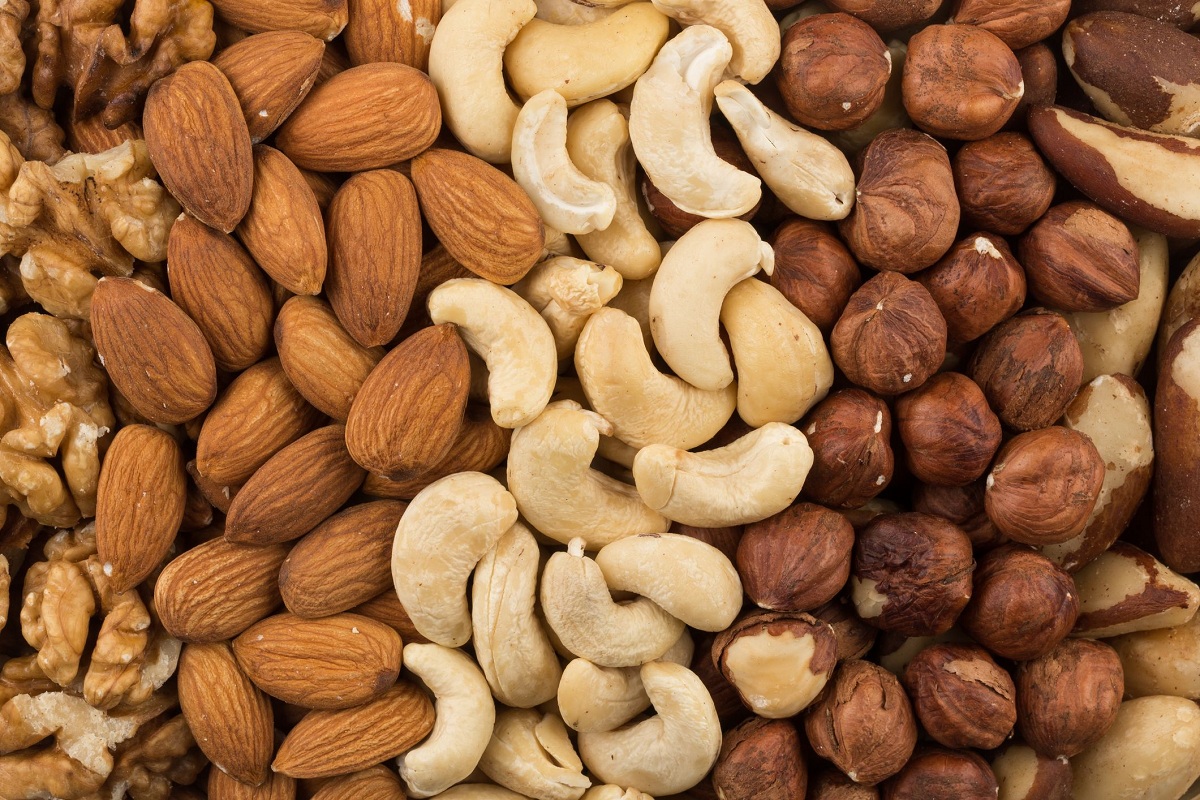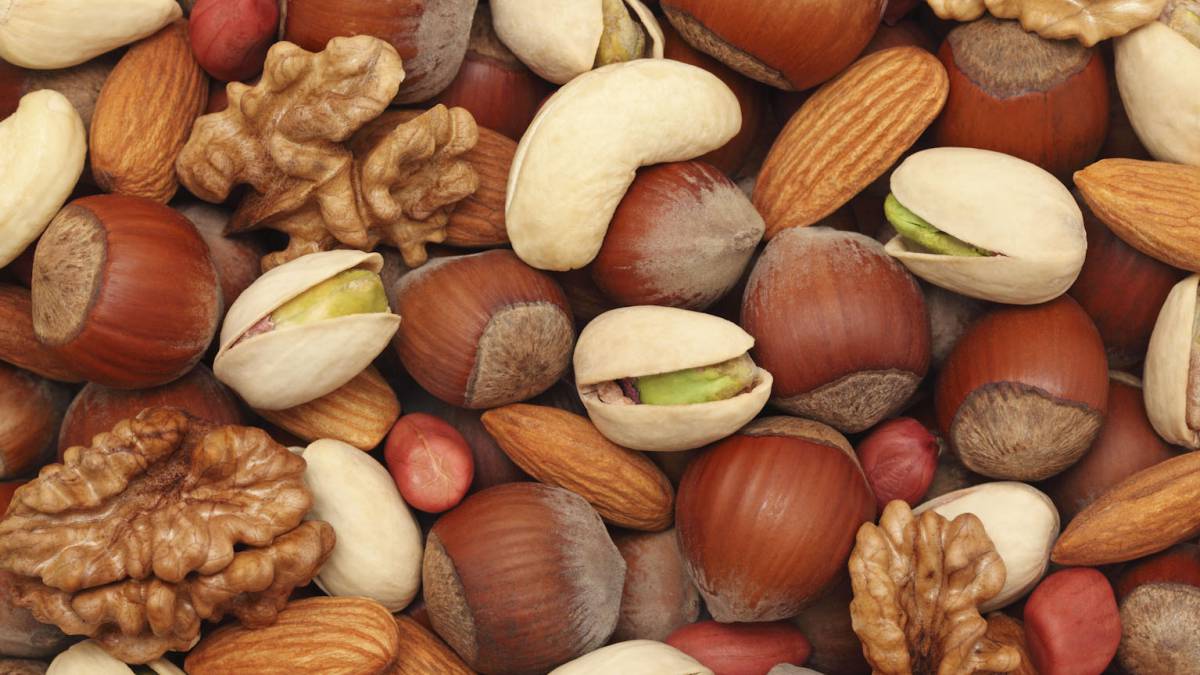
If we want to eat a healthy and balanced diet, it is essential to eat differently types of nuts. There are a great variety of these and we find it in all kinds of texture and flavor. These nuts have very healthy and recommended properties for all people.
In this article we are going to tell you about the main characteristics, nutritional support and the different types of nuts.
Properties of nuts

It is known as a dried fruit that type of fruit whose water content is less than half its total capacity. There are a great variety of types of nuts in nature and it is interesting to introduce them into our usual diet for different reasons. The first reason is because of the amount of nutrients they provide us and the second is due to satiety. When we establish a fat loss diet we must know the caloric deficit we need.
The main macronutrient in nuts is fat. As we know, fat is more caloric than carbohydrates or proteins. Therefore, we must have very controlled the amount of nuts that we put in the diet. Depending on the nature of the dried fruit, it will have a greater or lesser amount of fat.
There are different types of nuts and they have different characteristics. There are some meatier, others tougher and with more or less vegetable fat content. The characteristic they all have in common is their protective shell. As with the rest of the characteristics, the shell can be more or less resistant.
Types of nuts in food

Although nuts have other uses, the most common is gastronomic. There are many cultures that have enhanced the medicinal benefits of these foods. For example, in the western Mediterranean region nuts are served at noon as an aperitif or at the end of dinner to aid the digestion process. They are usually added as an accompaniment in cloth salads that we find main nuts such as they are the peanuts, pistachios, almonds, walnuts, pine nuts or pipes.
Among the medicinal uses that these foods have, we find the production of oil is to be able to massage and provide benefits for both the muscles and the skin. The main natural oils that are extracted from nuts are almond, walnut, pistachio or peanut oil. These oils can also serve as gastronomic food.
Nutritional contribution
As we have mentioned before, these are very nutritious foods that we can introduce into our diet on a daily basis. Its great nutritional contribution makes it an almost obligatory food group in any diet for any objective and age. Although doctors recommend eating a handful of nuts a day, this is not entirely the case.
As we have mentioned before, the main macronutrient in nuts are vegetable fats. The content of polyunsaturated and monounsaturated fats is higher than that of protein or carbohydrates. Therefore, the calorie content will be much higher. Depending on the energy expenditure of physical activity that we have in our daily, we must consume a certain amount of calories to maintain, gain or lose weight. This makes the amount of nuts that we eat in the diet is limited. The typical handful of nuts can be very variable depending on the size of the hand, the type of nut, etc.
Walnuts are rich in selenium and zinc. Pistachios have more natural fats and almonds provide a little more vegetable protein. Finally, hazelnuts contain a lot of vitamins and minerals. It is best to eat nuts without salt or additives and better raw rather than roasted cooked in any way. Raw is how they maintain all the nutritional properties.
Types of nuts and their properties

Consuming nuts daily can help have great health benefits. It can reduce the risk of cardiovascular and respiratory diseases, anemia, intestinal problems, diabetes, and certain types of cancer. In addition, it favors the proper development of muscles and bones. And it is that vegetable fats have characteristics that help improve blood circulation and help keep mineral levels in the blood high enough to improve your fertility.
We are going to analyze the following types of nuts:
- Nuts: comes from common walnut. It is one of the most popular nuts in the world. It is usually consumed raw both in salads and as appetizers.
- Almonds: It comes from the almond tree whose scientific name is Prunus dulcis. It is used as an aperitif and as a pastry ingredient. One of the properties that people are not so interested in is its allergenic potential. It is an ability to power causes allergic reactions to people who are susceptible.
- Hazelnuts: both food and cooked are eaten and an oil with an intense flavor is extracted. It has numerous health benefits such as the regulation of the circulatory system or the prevention of body wear associated with aging. Hazelnuts are widely used as a pastry ingredient.
- Pistachios: They have a greenish color and are used in sauces, ice cream, cakes and other recipes.
- Cashew nuts: It is one of the least consumed nuts naturally. They are usually eaten roasted and with a large amount of sugar. It is also used to create cosmetics, insecticides and medicines, among others.
- Sunflower seeds: It is considered as the food of leisure. They have been used throughout history to prepare dyes, hair oils and skin oils.
- Peanuts: peanut is not technically a nut. They are legumes. However, from a food and culinary point of view it can be considered as such since they are very similar in characteristics and nutrients. They are consumed as an aperitif in a very common way and in cream by those people in the fitness world.
I hope that with this information you can learn more about the different types of nuts and the health benefits they have.